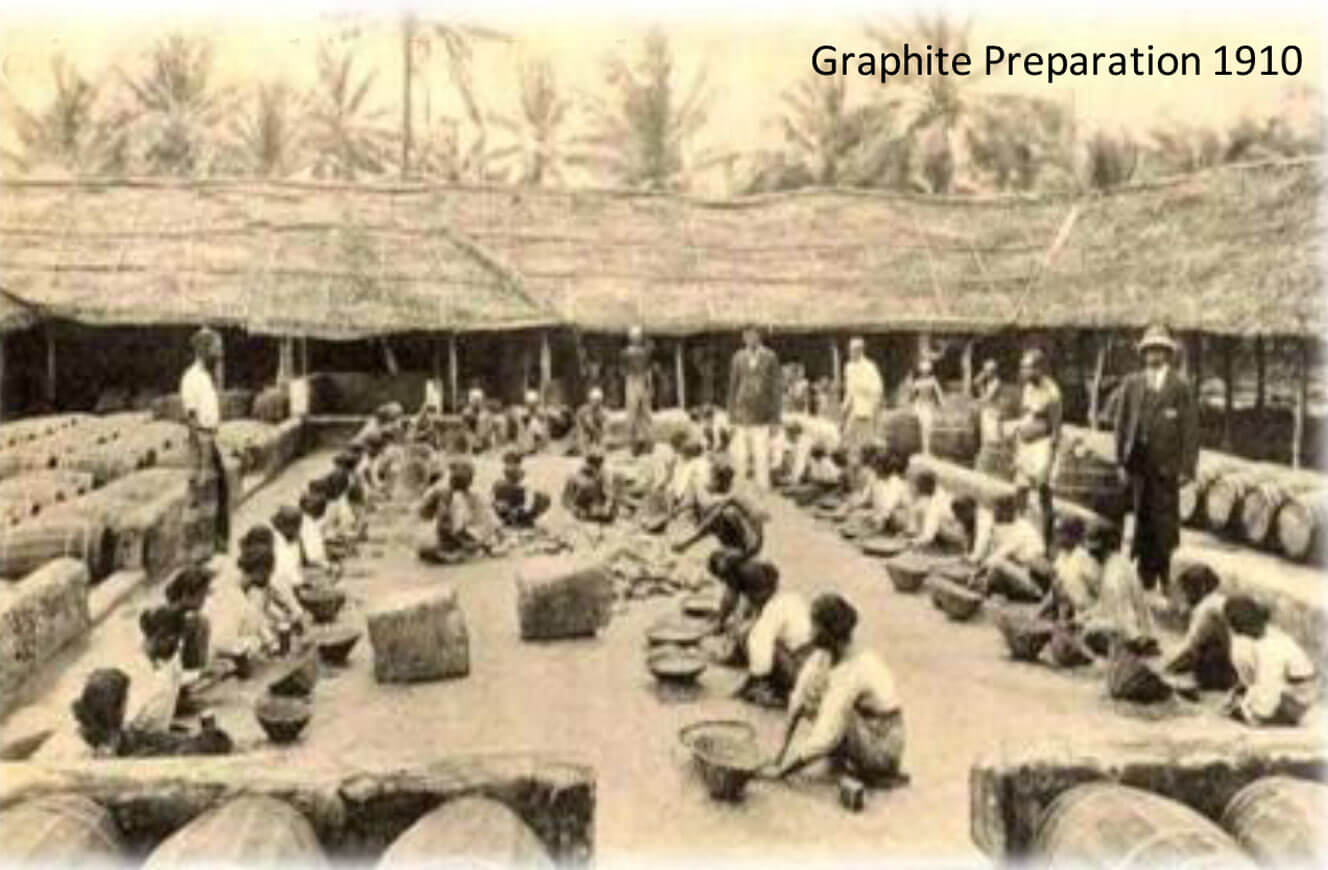Despite Vein graphite’s modern popularity, the graphite industry in Sri Lanka enjoys an ancient history, forming an integral part of the local folk culture. The lives of miners and graphite mines have been immortalised in local poems and songs. Known as miniran in Sinhala, according to historical records roughly 35,000 metric tonnes of natural graphite were exported annually, during both World Wars.
As the only country to export commercial quantities of Vein graphite, Sri Lanka recognises the mineral’s value in creating significant foreign investment from both local and foreign private sectors. Despite Sri Lanka’s 200 year old granite history, few are aware today of the purity of Sri Lanka vein graphite. It is an extremely high grade with over 90% carbon.
Vein graphite is today in demand for numerous industries owing to its composition. It is used in lubricants as it can withstand extreme pressure and high temperatures. Lithium batteries require graphite electrodes which are natural flake and vein graphite. With the growth in popularity of hybrid and electric cars and electronics in general, graphite demands are predicted to increase by 30-40% annually.
The word graphite is derived from the Greek gréphein meaning to write or draw. It is a soft black and metallic mineral composed of the element carbon. Though it has the same chemical component as diamond the two minerals are very different, one of the most noticeable features being that graphite is opaque while diamond is transparent. In graphite, the carbon atoms are linked in hexagonal sheets which slide over each other which accounts for graphite’s slipperiness. However, graphite is stable within ordinary atmospheric conditions.
The carbon in most graphite is derived from living things. This organic carbon under certain conditions such as under extremely high pressure, metamorphosises to purify the organic material which produces graphite many miles underground. It is owing to this natural geological fluid to slid disposition that vein graphite deposits are typically above 90%. Vein graphite typically can measure from a few centimetres to about two metres in thickness, with the purest part being located towards the middle section.


